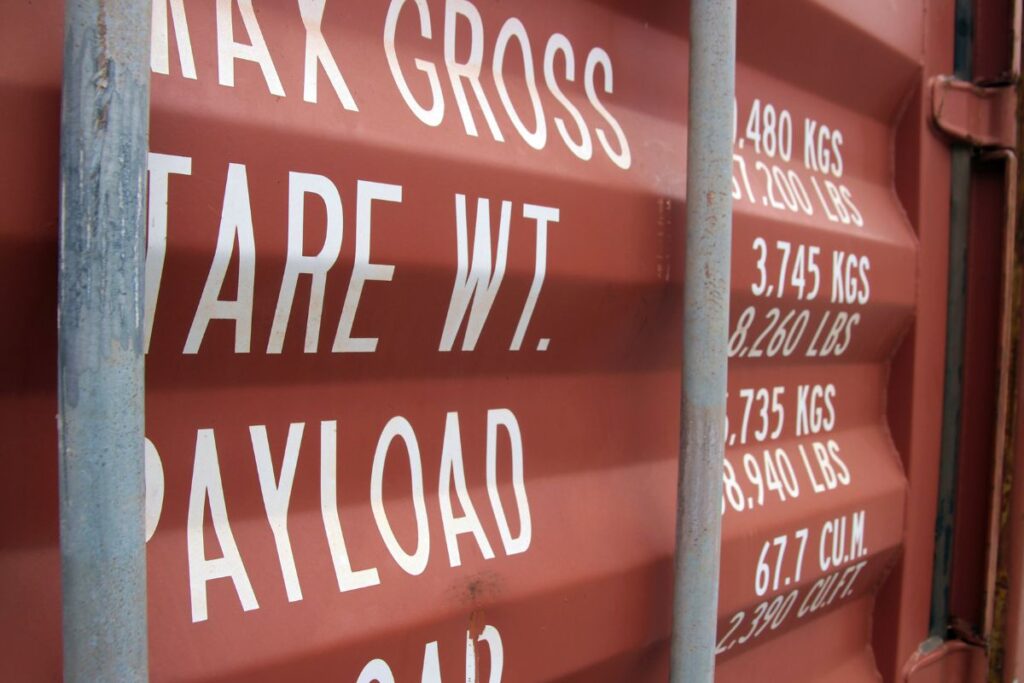Shipping containers are key in global trade. They help move vast amounts of cargo across oceans daily. More than 80% of the world’s goods are transported by sea, with containers handling the majority. There are millions of containers in circulation today, each identified by a unique number. These numbers tell you who owns the container and what it is carrying.
Each container has a code, and these codes are important for tracking, ensuring goods reach the right destination. Customs also rely on these codes to process shipments faster. Without them, it would be much harder to keep track of millions of containers moving across the globe.
These unique numbers make shipping efficient by linking containers to the right paperwork. This helps with both tracking and documenting goods for smooth operations at ports and with customs clearance.
History and Role of BIC in Standardizing Shipping Container Identification
The system for identifying shipping containers started in 1950’s monitored by the Bureau International des Containers (BIC). It was set up to manage and standardize container identification globally. The International Chamber of Commerce (ICC) helped promote this system to support intermodal transport. This allowed containers to move smoothly between ships, trucks, and trains.
In 1972, the ISO 6346 standard was adopted. This made container codes uniform across the world. Each container received a unique code, which helped identify the owner and track its journey. The BIC manages these codes and maintains a global register to ensure each code is unique.
Several organizations rely on these codes to make global shipping smoother. The World Customs Organization (WCO) uses the codes for customs clearance.
The International Road Transport Union (IRU) supports the movement of goods via roads. They use container numbers to track the flow of goods across countries, ensuring that containers can be easily identified during transport.
The International Union of Railways (UIC) also uses container numbers to track containers on trains. This helps ensure that containers are properly identified and handled as they move across different countries and rail systems.
What do the numbers on the shipping container mean?
A shipping container number has several key components. Each part of the code gives specific information about the container’s owner, type, and identification.
- Owner code (BIC code):
- The first three letters that identify the owner or operator of the container. The BIC (Bureau International des Containers) assigns these codes.
- Equipment category identifier:
- This is a single letter following the owner prefix. It tells you what type of equipment the container is:
- U: For all freight containers.
- J: For detachable container equipment.
- Z: For trailers and chassis.
- This is a single letter following the owner prefix. It tells you what type of equipment the container is:
- 6-digit serial/registration number:
- This is a unique number assigned by the owner of the container. It helps identify each container individually.
- Check digit:
- The check digit is asingle number used to validate that the code is correct. It prevents errors when recording or transmitting the container number. The check digit is often enclosed in a box or set apart visually to make it clear.
Example Container Code Breakdown:
| Component | Example | Description |
|---|---|---|
| Owner Prefix (BIC code) | ABC | Identifies the owner of the container (e.g., Maersk). |
| Equipment Category Identifier | U | Indicates it is a freight container. |
| Serial Number | 123456 | Unique number given by the owner for identification. |
| Check Digit | 7 | Validates the accuracy of the entire container code. |
A typical container code might look like this: ABCU1234567. This tells you the container is owned by a company with the prefix “ABC,” is a freight container (“U”), and has a unique serial number of “123456,” with a check digit of “7” to ensure the number is accurate.
This identification system provides a uniform way to recognize containers globally. It allows for accurate documentation and communication from one point of the shipment to another.
BIC Calculators for Accurate Identification and Validation
To make sure a container number is correct, you can use a BIC Check Digit Calculator. This tool confirms that the check digit matches the rest of the number, helping to avoid any mistakes.
On the calculator enter the BIC code, equipment category, and serial number into the calculator to check if the number is valid. This tool helps confirm the accuracy of your container number.
Placement and Visibility of Container Numbers and Markings

Shipping container numbers are placed in specific locations to ensure easy identification. The container number is usually displayed on the doors and sides of the container. It also appears on the CSC plate (Convention for Safe Containers plate) fixed to the door. This makes it simple for operators and customs to locate and read the code.
In addition to the container number, other important operational markings are displayed. These include the tare weight, net weight (or payload), and the maximum gross weight. These markings also show ISO size and type codes. They help to determine the container’s capacity and type, which is critical for safe transport
For a standard 20-foot container (TEU), here are the typical operational markings you would see.
| Operational Marking | Details |
|---|---|
| Tare Weight | 2,200 kg (4,850 lbs) |
| Maximum Gross Weight | 30,480 kg (67,200 lbs) |
| Net Weight (Payload) | 28,280 kg (62,350 lbs) |
| ISO Size and Type Code | 22G1 (20-foot, general-purpose, standard height) |
These markings are found on the doors and sides of the container, helping ensure safe loading and compliance during transport
How Container Tracking Can Help Prevent Fees
Container numbers are also important in logistics documents. They appear on the Bill of Lading, packing lists, and customs forms. This ensures that everyone involved in the supply chain knows which container belongs to which shipment and allows for tracking.
Tracking shipping containers can help prevent demurrage and detention fees. For example, if you notice a container is arriving earlier than expected, you can quickly adjust your schedule. You might arrange for transport to pick up the container right away, preventing it from sitting at the port for too long. Without this quick action, you could face extra fees for storage or late pick-up.
It is essential to keep container markings visible and readable at all times. Regular inspections are needed to ensure that the numbers do not fade or get damaged. Using weather-resistant materials helps protect the markings from the elements like rain, sun, or sea conditions, ensuring they remain clear.
Painting over container numbers can lead to significant operational and legal issues. If a container number is not readable, it can cause tracking failures because systems rely on these numbers to track the container. Additionally, legal risks are real when markings are altered or obscured. For example, customs authorities require clear identification numbers for inspection and clearance. If the container number is not visible or tampered with, customs may delay the shipment or even deny entry, resulting in fines, penalties, or additional storage fees. This can affect the overall flow of goods and create expensive delays.
FAQ
What is the standard container code for a 20-foot general-purpose container?
The ISO code for a 20-foot general-purpose container is “22G1”. Let’s break it down:
- “22”: This refers to the container’s dimensions.
- “2”: Indicates that the container is 20 feet in length.
- The second “2”: Signifies that the container has a standard height of 8 feet 6 inches.
- “G”: Stands for a general-purpose container (also called a dry container). These containers are fully enclosed with solid walls, a roof, and a floor, making them suitable for a wide variety of cargo that does not require special conditions such as refrigeration.
- “1”: Indicates the container has standard features and no special modifications.
In summary, a 22G1 container is a 20-foot general-purpose container with standard height and features, commonly used for shipping various types of dry cargo in global trade.
What is the standard container code for a 40-foot general-purpose container?
The ISO code for a 40-foot general-purpose container is “40G0”. Here’s the breakdown:
- “40”: Refers to the container’s length.
- The first digit “4” indicates it is a 40-foot container.
- The second digit “0” specifies that the container has a standard height of 8 feet 6 inches.
- “G”: Stands for a general-purpose container (dry container) that is fully enclosed and typically used for transporting general cargo.
- “0”: Indicates the container has standard characteristics and features with no special modifications.
In summary, a 40G0 container is a 40-foot general-purpose container with a standard height of 8 feet 6 inches, suitable for various types of dry goods.
What is the standard container code for a 40-foot high cube general-purpose container?
The ISO code for a 40-foot high cube container is “42G1”. Here’s the detailed breakdown:
- “42”: Refers to the container’s length and height.
- The first digit “4” means it is a 40-foot container.
- The second digit “2” indicates that the container is high cube, meaning it has a height of 9 feet 6 inches (1 foot taller than a standard container).
- “G”: Stands for a general-purpose container (dry container), fully enclosed, used for standard cargo.
- “1”: Represents standard characteristics and features.
In summary, a 42G1 container is a 40-foot high cube general-purpose container with a height of 9 feet 6 inches, ideal for transporting more volume compared to a standard container, especially for lightweight but bulky goods.







